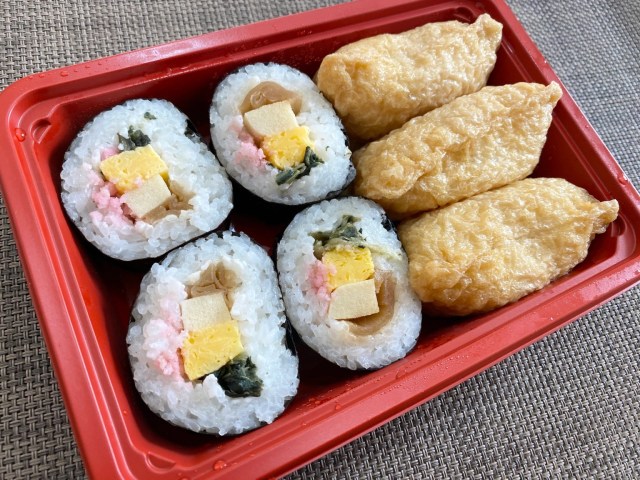
Defrosting sushi puts a new spin on the way we eat traditional Japanese food.
Japanese stores sell a lot of things, but frozen sushi generally isn’t one of them. So when we came across this unusual product in the freezer section at a store in Hiroshima Prefecture, we took it straight to the cash register and handed over 494 yen (US$3.85) so we could take it home and try it out.
This frozen package was named “Sukeroku Sushi“, and looking closer, we could see that it was manufactured by Hiroshima’s Post Gohan no Sato Company. Sukeroku Sushi refers to a combination of makizushi (rolled sushi wrapped in seaweed) and inarizushi (fried tofu pouches filled with rice), and this particular pack contained four makizushi and three inarizushi.
▼ That works out to just over 70 yen per piece.
According to the instructions on the back of the pack, this sushi is not to be thawed naturally on the counter or in the refrigerator. Instead, it has to be defrosted in the microwave in order to maintain the quality of the white rice.
With rice being a star ingredient, we definitely didn’t want to do anything that might jeopardise its texture and flavour, so we faithfully followed the instructions to pierce the packaging and place it in the microwave for three minutes and 20 seconds at 500 Watts.
Upon taking it out, the sushi looked…exactly like sushi we’d normally buy at the supermarket!
After letting it cool to room temperature, we picked up our chopsticks to try the defrosted sushi. Sure, it looked great, but how would it taste?
Starting with a sushi roll, we were pleasantly surprised by the texture and flavour. It wasn’t incredibly delicious, but it was decent sushi, and much better than we’d anticipated for a morsel that had previously been frozen.
Next up, we tried the inarizushi and this one was much better. Still not restaurant-quality sushi, but you’d be hard-pressed picking this one out as the frozen one in a lineup with regular supermarket sushi.
▼ We were pleased to see that the grains of rice stayed together well and didn’t separate or fall out of the tofu pouch.
The way the rice held together was a good display of how moist and supple the grains stayed throughout the freezing and defrosting process. It also indicated that the company had done its research when settling on the optimum time for thawing in the microwave.
While we can’t really complain nor rave about the taste of the sushi, it’s pretty neat to know that companies like this are experimenting with new ways to store and distribute Japanese food, especially at a time when food waste is becoming such a global concern.
Maybe one day soon the technology will improve so we can enjoy restaurant-quality sushi straight from the freezer. Until then, we’ll be enjoying pressed frozen sushi, which is a little easier to freeze and thaw.
Images © SoraNews24
● Want to hear about SoraNews24’s latest articles as soon as they’re published? Follow us on Facebook and Twitter!
[ Read in Japanese ]

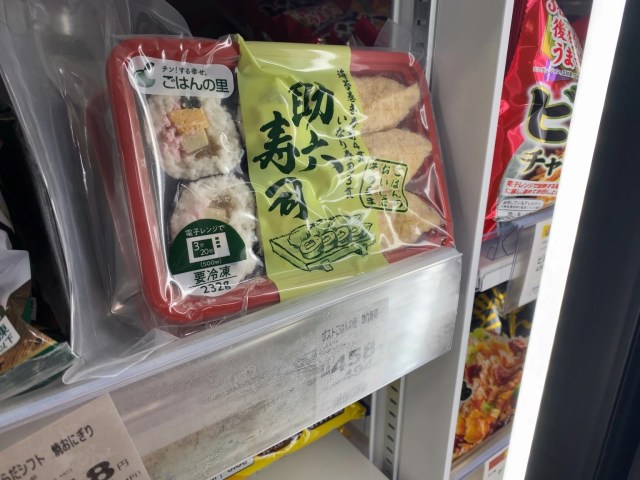
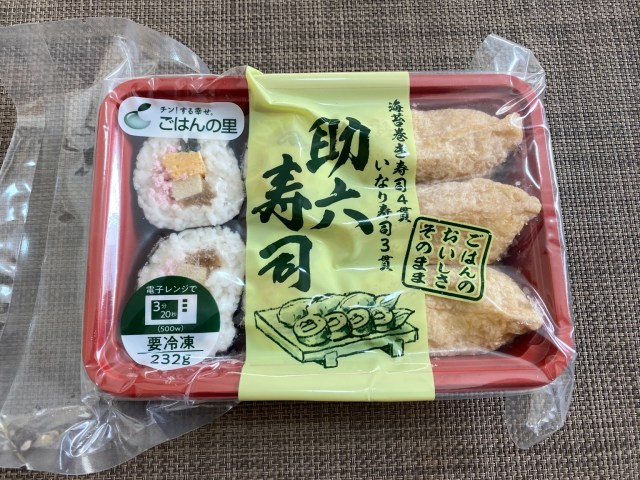
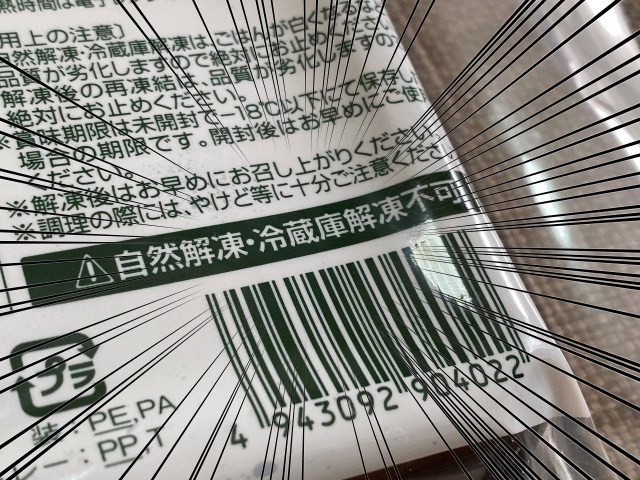
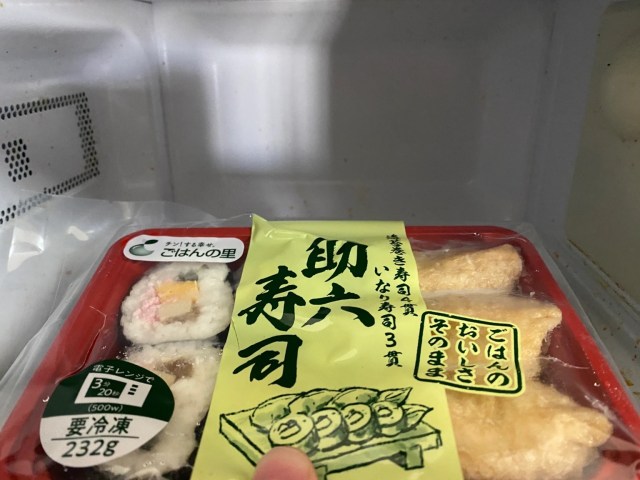
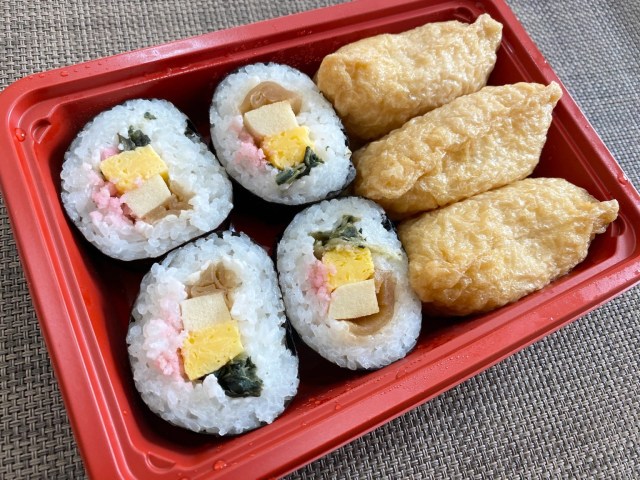
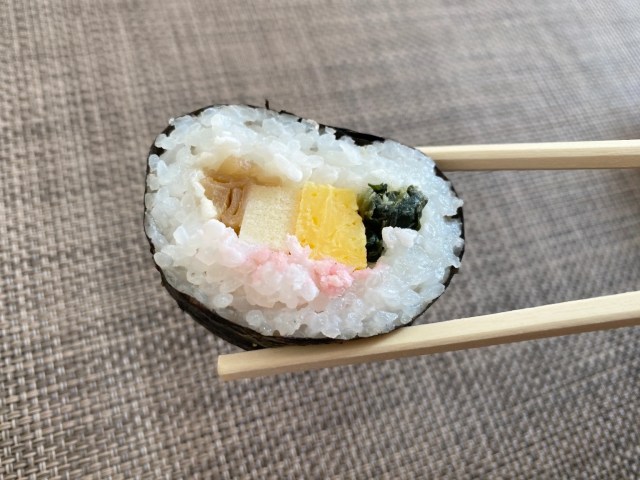
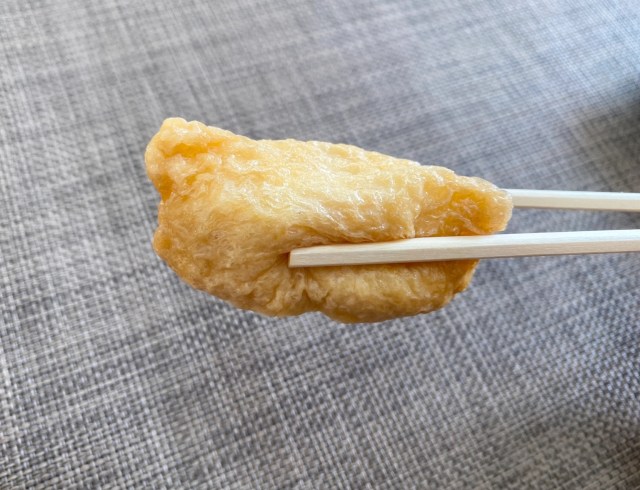
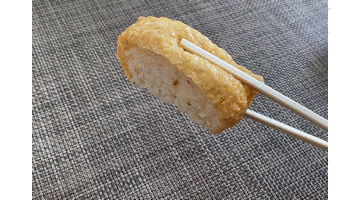
 We try a frozen sushi box from Rejyu, and it was way better than it sounds
We try a frozen sushi box from Rejyu, and it was way better than it sounds Sushi from a vending machine — would you try it? Mr. Sato did
Sushi from a vending machine — would you try it? Mr. Sato did Learn how to make sushi with a professional Japanese sushi chef in Tokyo
Learn how to make sushi with a professional Japanese sushi chef in Tokyo Supermarket sushi becomes a hot topic with foreigners on Reddit, but is it any good?
Supermarket sushi becomes a hot topic with foreigners on Reddit, but is it any good? Takoyaki sushi rolls at popular Japanese chain take California rolls to a whole new level
Takoyaki sushi rolls at popular Japanese chain take California rolls to a whole new level New Nintendo Lego kit is a beautiful piece of moving pixel art of Mario and Yoshi【Photos】
New Nintendo Lego kit is a beautiful piece of moving pixel art of Mario and Yoshi【Photos】 How to order snacks on a Shinkansen bullet train in Japan
How to order snacks on a Shinkansen bullet train in Japan Hello, cosmetics! Clinique teams up with Hello Kitty this summer for first-time collaboration
Hello, cosmetics! Clinique teams up with Hello Kitty this summer for first-time collaboration Demon Slayer: Kimetsu no Yaiba gets new roller coaster attractions and food at Universal Studios Japan
Demon Slayer: Kimetsu no Yaiba gets new roller coaster attractions and food at Universal Studios Japan McDonald’s adds new watermelon frappe and fruity macaron to its menu in Japan
McDonald’s adds new watermelon frappe and fruity macaron to its menu in Japan Cosmetic wizardry: Asian women removing makeup to reveal their true selves goes viral【Video】
Cosmetic wizardry: Asian women removing makeup to reveal their true selves goes viral【Video】 Tsukiji Fish Market Vendor Releases Tuna For Home Assembly
Tsukiji Fish Market Vendor Releases Tuna For Home Assembly High-fashion Totoro cuddle purse is like an elegant stroll in the forest【Photos】
High-fashion Totoro cuddle purse is like an elegant stroll in the forest【Photos】 U.S. Olympic athlete reveals he runs with Yi-Gi-Oh! cards tucked into his uniform【Video】
U.S. Olympic athlete reveals he runs with Yi-Gi-Oh! cards tucked into his uniform【Video】 Japan’s new difficult-to-drink-from beer glass protects your liver, but it’s a brutal experience
Japan’s new difficult-to-drink-from beer glass protects your liver, but it’s a brutal experience Nintendo history you can feel – Super NES, N64, and GameCube controllers become capsule toys
Nintendo history you can feel – Super NES, N64, and GameCube controllers become capsule toys “The most Delicious Cup Noodle in history” – Japan’s French Cup Noodle wins our heart【Taste test】
“The most Delicious Cup Noodle in history” – Japan’s French Cup Noodle wins our heart【Taste test】 Starbucks releases a cute Frappuccino and Unicorn Cake…but not in Japan
Starbucks releases a cute Frappuccino and Unicorn Cake…but not in Japan Kyoto Tower mascot termination reveals dark side behind cute Japanese characters
Kyoto Tower mascot termination reveals dark side behind cute Japanese characters McDonald’s Japan’s Soft Twist Tower: A phantom ice cream only sold at select branches
McDonald’s Japan’s Soft Twist Tower: A phantom ice cream only sold at select branches Yabai Ramen: What makes this Japanese ramen so dangerous?
Yabai Ramen: What makes this Japanese ramen so dangerous? Finally! Nintendo Japan expands Switch 8-bit controller sales to everybody, Online member or not
Finally! Nintendo Japan expands Switch 8-bit controller sales to everybody, Online member or not Japanese government wants to build luxury resorts in all national parks for foreign tourists
Japanese government wants to build luxury resorts in all national parks for foreign tourists To combat declining birth rate, Japan to begin offering “Breeding Visas” to foreigners
To combat declining birth rate, Japan to begin offering “Breeding Visas” to foreigners 10 things you should buy at 7-Eleven in Japan
10 things you should buy at 7-Eleven in Japan Studio Ghibli releases anime heroine cosplay dresses that are super comfy to wear
Studio Ghibli releases anime heroine cosplay dresses that are super comfy to wear Woman charged for driving suitcase without a license in Osaka
Woman charged for driving suitcase without a license in Osaka Studio Ghibli unveils My Neighbour Totoro miniature house model
Studio Ghibli unveils My Neighbour Totoro miniature house model Kyoto experiencing problems with foreign tourists not paying for bus fares, but not on purpose
Kyoto experiencing problems with foreign tourists not paying for bus fares, but not on purpose Fighting mild hunger with a Japanese soda that turns into jelly in the stomach【Taste test】
Fighting mild hunger with a Japanese soda that turns into jelly in the stomach【Taste test】 Studio Ghibli’s Howl’s Moving Castle tapestry unveiled in Japan for first time
Studio Ghibli’s Howl’s Moving Castle tapestry unveiled in Japan for first time McDonald’s new Happy Meals offer up cute and practical Sanrio lifestyle goods
McDonald’s new Happy Meals offer up cute and practical Sanrio lifestyle goods Sales of Japan’s most convenient train ticket/shopping payment cards suspended indefinitely
Sales of Japan’s most convenient train ticket/shopping payment cards suspended indefinitely Sold-out Studio Ghibli desktop humidifiers are back so Totoro can help you through the dry season
Sold-out Studio Ghibli desktop humidifiers are back so Totoro can help you through the dry season Japanese government to make first change to romanization spelling rules since the 1950s
Japanese government to make first change to romanization spelling rules since the 1950s Foreigner’s request for help in Tokyo makes us sad for the state of society
Foreigner’s request for help in Tokyo makes us sad for the state of society Ghibli founders Toshio Suzuki and Hayao Miyazaki contribute to Japanese whisky Totoro label design
Ghibli founders Toshio Suzuki and Hayao Miyazaki contribute to Japanese whisky Totoro label design Doraemon found buried at sea as scene from 1993 anime becomes real life【Photos】
Doraemon found buried at sea as scene from 1993 anime becomes real life【Photos】 Tokyo’s most famous Starbucks is closed
Tokyo’s most famous Starbucks is closed Princesses, fruits, and blacksmiths: Study reveals the 30 most unusual family names in Japan
Princesses, fruits, and blacksmiths: Study reveals the 30 most unusual family names in Japan Which Japanese conveyor belt sushi chain has the best saltwater eel sushi?【Taste test】
Which Japanese conveyor belt sushi chain has the best saltwater eel sushi?【Taste test】 Here’s what a 10,000-yen Sushi Cake from Japan looks like
Here’s what a 10,000-yen Sushi Cake from Japan looks like How to choose a great block of sashimi-grade tuna – 66-year maguro master shares his protips
How to choose a great block of sashimi-grade tuna – 66-year maguro master shares his protips Defrost a steak in 5 minutes without using heat or the microwave? What is this sorcery!?【Video】
Defrost a steak in 5 minutes without using heat or the microwave? What is this sorcery!?【Video】 Japan develops special sushi for pregnant women
Japan develops special sushi for pregnant women A feast for all sushi lovers — the amazing 1,000-yen lunch at Sushi Takehan Wakatsuki!
A feast for all sushi lovers — the amazing 1,000-yen lunch at Sushi Takehan Wakatsuki! This frozen “lucky bag” from a leading sushi chain has absolutely no sushi in it
This frozen “lucky bag” from a leading sushi chain has absolutely no sushi in it Sukiyabashi Jiro Sushi Rice: How good is rice from Japan’s legendary sushi restaurant?
Sukiyabashi Jiro Sushi Rice: How good is rice from Japan’s legendary sushi restaurant? Our reporter dishes on the differences between sushi from Ginza Kyubey and Sushiro【Taste test】
Our reporter dishes on the differences between sushi from Ginza Kyubey and Sushiro【Taste test】 Vending machine with in-flight meals becomes a sell-out hit at Haneda Airport in Japan
Vending machine with in-flight meals becomes a sell-out hit at Haneda Airport in Japan A collection of 20 creative ‘sushi’ rolls that were invented outside of Japan
A collection of 20 creative ‘sushi’ rolls that were invented outside of Japan Will Smith makes sushi with Japanese YouTuber Bilingirl Chika
Will Smith makes sushi with Japanese YouTuber Bilingirl Chika Tokyo Station’s second-most popular bento is great because of what it isn’t【Taste test】
Tokyo Station’s second-most popular bento is great because of what it isn’t【Taste test】 Three Kyoto sushi shops are sending girls reeling in culinary delight
Three Kyoto sushi shops are sending girls reeling in culinary delight Tokyo’s new frozen ramen vending machines are brain-breakingly amazing【Taste test】
Tokyo’s new frozen ramen vending machines are brain-breakingly amazing【Taste test】 Tokyo’s all-female sushi chef restaurant has closed down, is being dismantled
Tokyo’s all-female sushi chef restaurant has closed down, is being dismantled
Leave a Reply